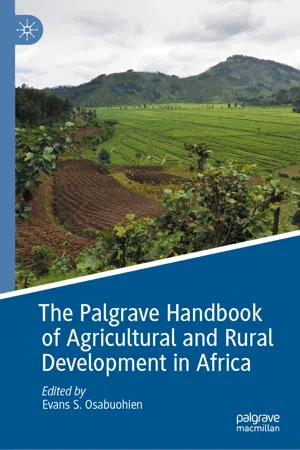1 Introduction
The formulation of comprehensive global development goals is one task, while domestication of these goals to create a development reality at the local level is another critical task. The fact that the Sustainable Development Goals (SDGs) are common to all states does not mean similar approaches to achieving them. Every country has its own governance structure and development strategies that aim at reaching the global targets. It is not logical to harmonize the vast and diverse development approaches to achieve the SDGs, but instead, we can only think of contextualizing the latter. This understanding of policy downscaling resonates with the definition of localization as “the implementation of supranational policy into projects at the appropriate subnational level to ensure the service delivery to the appropriate level population” (Patole 2018). The chapter focuses on the 17 SDGs and the 169 targets that form the UN 2030 Agenda for Sustainable Development and which picks up from the Millennium Development Goals (MDGs) (United Nations Development Program [UNDP] 2017). The analysis involves the domestication of SDGs in relation to labor and agricultural sectors in enhancing rural development.
The chapter starts by looking at the genesis of international development goals, and the transition from MDGs to SDGs. It continues to examine the performance of Africa in the achievement of SDGs. It then engages the concept of SDGs domestication which is then analyzed in the context of the devolved governance. In particular, the domestication of the SDGs is analyzed in reference to devolved governance using Kenya as the case study.
2 International Development Goals
The genesis of the current SDGs can be traced back to the 1960s international development decade when the first international development agenda within the UN system was established. The 1960s marked the first decade for international development. The 1961 United Nations Development Decade 1710 (XVI), outlined a program for international economic cooperation that emphasized on the promotion of the development process of developing countries. Further, it recognized that the social and economic development among the Third World countries is not only beneficial to those very countries but also to the world peace, security, and prosperity (United Nations 1961). During the 1960s Development Decade, there were proposals for action. For instance, in 1963 there was a joint Declaration of the developing countries on development. From 1970 to 1980 there was a continuation of the 1960s’ international development strategy—the second UN development decade. During the 1970s, key events such as declaration on the Establishment of a New International Economic Order (1974) and the World Conference on Agrarian Reform and Rural Development (1979) which gave rise to Food and Agricultural Organization (FAO) (United Nations 2007).
The 1980s marked the third development decade with a special focus on developing countries. It connected discrimination, rights, and development (with more attention to children and women); disarmament and development; and the development of the Least Developed Countries (LDCs). The following international development decade—the 1990s—was featured mainly by the concept of human development that had emerged in the 1980s (United Nations 2018). A shift from the language of “decades of development” to human development indicated improvement in comprehensiveness in development analysis. All through the 1990s, the UN published human development reports. The reports mainly were about, and continue to measure and compare, the Human Development Index (HDI) between countries and regions of the world. HDI puts emphasis on people and their capabilities as an ultimate methodology of assessing a country’s development. Analytically, HDI involves development measurement in terms of life expectancy, education, and per capita income. SDGs and MDGs have been the international development agendas for the twenty-first century. Although the international development agenda has existed since the 1960s, in general, the MDGs and SDGs present more quantifiable objectives.
In 2000, the UN General Assembly adopted the Millennium Declaration. The goals and targets that focused on development became the MDGs. The MDGs were mainly an effort to refocus on the long period of deliberation to progress the social and economic development of the LCDs. The goals are grounded on the most demanding development needs of the least developing countries. The goals include (1) To eradicate extreme poverty and hunger; (2) To achieve universal primary education; (3) To promote gender equality and empower women; (4) To reduce child mortality; (5) To improve maternal health; (6) To combat HIV/AIDS, malaria, and other diseases; (...
